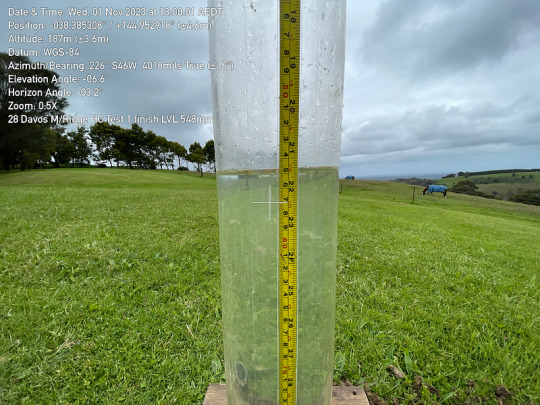#lca studies
Text

7, February 2024
Studying for SEA tonight with a cup of warm tea.
#lca#studyblr#the eagle in the falcon's nest#poli sci#lca studies#ignesco#college life#uniblr#note taking#university student#SEA#southeast asia#international relations
7 notes
·
View notes
Note
Ok!! Not worrying at all!! /sar
You tagged that with duke btw
- 🚑💥
I am aware of that
don't let him know please please please please plea
#ask#anon#lego city adventures#the inventor lca#the inventor oc#lca#the inventor#start post#duke detain#ooc:he's just been studying/observing duke too much lol :33
3 notes
·
View notes
Text
Let me tell you about my morning
Ok so a few facts to start off with:
I really like maths (I'm not a whiz but I really enjoy it)
My phone never dies, I always make sure it is charged
I just graduated secondary school (highschool) and in ireland you have to sit tests at the end of school called your leaving cert which is your entire grade that gets you into a college
I did an alternative leaving cert course these last two years called the leaving cert applied (LCA) which is like a practical (and easy af tbh) version of the leaving cert, which does have exams at the end of the school, but is mostly consisted of projects throughout the year which gets you your credits
Because I really like maths, I was losing my mind in the LCA maths class, as it was literally so so so easy I wanted to explode, so my year head and course coordinater told me that i could take off certain LCA classes in order to do maths with the mainstream leaving cert
I was asked if I wanted to sit the mainstream leaving cert maths exam and I said yeah, since I had basically spent a year teaching myself the course (i only got to got to a couple of the maths classes a week so i mostly just studied for fun in my free time) but then I was told something along the lines of "no actually you cant sit the maths exam because blah blah blah stupid ass reason" literally like 2 days before exams started
The maths exam is split into 2, Paper 1 and Paper 2, each done on different dates.
Ok NOW we get into how my morning started off like.
I had no exams today so I was sleeping in like a normal person on a free day. I wake up to hearing sharp knocking on my front door. I am not clothed, as it was a warm night so i go "nah, fuck this" and go back to sleep.
The knocking happens again, and my brother goes down to answer the door. I hear someone talking to them and saying to wake me up in an urgent voice, so I spring out of bed and throw some clothes on.
I go downstairs to see 2 teachers from my school outside my house going "ABBY QUICK GET IN THE CAR YOU CAN SIT THE MATHS PAPER 2 EXAM!!!! IT STARTED AT 9:30 BUT IF YOU GET THERE BEFORE 10 YOU CAN STILL TAKE IT" (it was like 9:50-ish at this point)
One of the teachers was my school chaplain (Ms X) and the other was the one that helps organize the exams (Ms Y), both very lovely ladies. Ms Y goes "ABBY I RAN A RED TO GET HERE, I'VE NEVER RUN A RED IN MY WHOLE LIFE", and then ms X added "Yeah and she screamed FUCK while she did it"
So i grab my bag and hop in the car and
my god we
ZOOMED
there.
This woman who seemed like normally a very sensible driver broke SO MANY LAWS to get me there.
She ran 3 red lights. She wasn't "pushing the yellows". These were fully red lights she went through, at definitely speed limit breaking speeds.
Ms X jokingly asked if I wanted her to pray and i was like FUCK IT yeah sure and so we all started praying that my exam would go well and that we wouldnt be pulled over by the guardaí, or alternatively, die on the way there.
When we got the the school my vice principal was waiting for me and he opened the car door and i was told to leave my bag and we ran up the stairs together, and i got in just in time.
When i got out, made my way home and checked my phone after I charged it, I saw almost my entire family as well a bunch of staff members had been texting and ringing me to wake up for the exam
Anyways, as for how the exam actually went? It wasn't bad! I definitely did the very best I could've, considering i hadn't taken my adhd meds, I hadn't studied for like over a week for it, hadn't had breakfast and nearly lost my life on the way over
Anyways that was one of the most intense and fun mornings of my life
31 notes
·
View notes
Text
MAIN HEADCANONS
Centered in a Pico's School Before Shooting/LCA timeline
No ships mentioned on this post
⚠️ NON CANON ⚠️
Pico Captain
American
The only thing he's sure about is that he loves science and he'll study
He/Him
Unlabeled, Pansexual, Omnisexual with male preference? no idea, he's just a silly guy doing silly stuff.
Somehow popular.
His eyes are green
He has a lil cute tooth gap
Lots of freckles!!!!
18 y/o (PS) | 21 y/o (FNF)
Born April 30th
Darnell Jones
Afro-american, Born and raised in america
Almost full Default setting aka cisgender
He/him
Bisexual
An extroverted
He also has a lil bit TOC, he needs everything to be symmetrical.
His eyes are either purple If we take fantasy colors in count, if not they're deep blue.
18 y/o (PS) | 21 y/o (FNF)
Born January 24th
Nene Nakamura
Asian-american, Born and raised in america,
She's still connected to her Corean and Japanese roots.
She used to be really conservative, once she grew up she started to make her own opinions.
Not sure about her gender identity, she's really confident about being a seen as a girl
She/They
Definitely LGBTQ+
Her eyes are brown
She has a total of three moles in her face, one on the bottom corner of her right eye, another on the top right corner of her lips, the last one bottom left corner of her lips.
18 y/o (PS) | 21 y/o (FNF)
Born July 2nd
Cassandra
Penillian, although when someone ask she says she's german and she does have a subtile accent.. s
She's bi-gender.
Gives a flying fuck about pronouns but people seem to perceive her as a human female so she goes along with it.
Bisexual against her will, hates men BUT SOME OF THEM ARE FINE...
Yellow eyes
Shit ton of piercings on the ears and a total of 3 on her face, left eyebrow, two other on her bottom lip,
She has a little space in her right eye brow, no one know if she shaves it or if there's an scar there.
18 y/o (PS) | 21 y/o (FNF)
Born June 6th
Cyril "Cyclops" Johnson
BORN AND RAISED IN AMERICA🦅🦅🦅🦅
Cisgender
he/him
Straight (he's lying to himself)
He prob has posters of shirtless buff men on his room, he thinks it's normal for guys to have those kind of stuff.
He has a real bad idea about punks, real dumb
He failed a year.
He's Naturally blonde
Blue eyes
He does have an scar in his covered eye (he made the scar in the most stupidest way possibly.)
19 y/o (PS) | 22 y/o (FNF)
Born April 20th
Alucard A̶n̶d̶e̶r̶s̶o̶n̶ Volkov
Born and raised in america
His mom is Russian, his father's British
He's not completely sure but he thinks he's a Demiboy
Any pronouns mainly He/They
He might be in the Aroace spectrum
He didn't turned lavender from a day to another, he had vitiligo for quite some years before his skin went fully lavender.
His eyes are a mystery to everyone mainly since he doesn't take off his glasses because of how sensitive they are (this being a secondary effect from the experimentation his father did)
18 y/o (PS) | 21 y/o (FNF)
Born October 31th
Harold "Hanzou" Sasaki Aguilar
Born and raised in america, their mother is mexican, dad's japanese
Non-binary
They/He/She, they don't mind about what people call them,
They're polysexual.
They have multiple moles on his body the ones more noticeable are the ones on his face, some on his neck and hands being obvious as well.
His eyes are pure black..somehow
17 y/o (PS) | 19 y/o (FNF)
Born October 24th
Pierre Lemieux
Born and Raised on France, parents decided to move to USA for better work opportunities
Gay
Cisgender
He/They (Uses 'They' to refer to themselves)
The glasses are a esthetic thing, he wear contact lenses on school and black squared glasses on his house.
His eyes are brown.
18 y/o (PS) | 21 y/o (FNF)
Sebastián "Spike" Vázquez Campos
Born and raised on Mexico, he moved with his parents to USA since they wanted a change of airs
Non-binary
Any pronoun, mainly referred to as He/him
Abrosexual or antrosexual
He's working real hard to make Cyclops idea on punks change, he's so dang tired.
Naturally a brunette
Multiple face and ear piercings
Also some moles
His eyes are honey green.
18 y/o (PS) | 21 y/o (FNF)
Visual representation on my takes on their positions and stuff


You can change the "weeb" to "geek" or "nerd" if you like, lol
#picosschool#picos school#pico's school#fnf pico#nene pico's school#darnell picos school#cassandra pico's school#cyclops pico's school#alucard pico's school#hanzou pico's school
11 notes
·
View notes
Text
Ranking Reveals Salaries of Over 400 Professions in Brazil
Judges Earn Above $5,000, While Some Artists Receive Slightly Over $99

Judges are the highest-paid workers on a list of 427 occupations in Brazil, while creative and performing artists have the lowest average income, according to a study by economist Bruno Imaizumi from LCA Consultores.
The analysis uses microdata from the Continuous National Household Sample Survey (Pnad Contínua), released by the Brazilian Institute of Geography and Statistics (IBGE).
The list includes occupations that encompass formal and informal professionals in both private and public sectors. The information pertains to the effective monthly income in the second quarter of 2023.
Continue reading.
#brazil#brazilian politics#politics#economy#workers' rights#mod nise da silveira#image description in alt
2 notes
·
View notes
Text

Government of India approves development of LCA Tejas Mk2
Fernando Valduga By Fernando Valduga 09/02/2022 - 10:00 in Military
The government of India has agreed to the development of the next-generation variant of the Tejas Mk-2 light combat aircraft (LCA), a platform that will be an important element of future air combat.
The government sanctioned about $1.13 billion for the project, and the Tejas Mk2 will probably make the first flight in two years, preparing the ground for its production and subsequent operational availability around 2028, said an Indian official familiar with the developments.
The Tejas Mk2 project will give a significant boost to the Aatmanirbhar Bharat campaign (self-sufficient India), one of the main priorities of the government. The new combat jet is expected to meet the future requirements of the Indian Air Force (IAF), which has already introduced previous variants of the ACL and ordered 83 Mk1A variants.
The Mk2 fighter will be the most advanced LCA variant to be designed and developed by the Aeronautical Development Agency (ADA), the employee said. It will be equipped with a more powerful engine (GE414), a superior radar, better avionic and electronic, and will be able to carry a greater payload of weapons.

"This is a long-awaited and welcome decision. The IAF is dealing with a shortage of fighter squads, and the Tejas Mk2 LCA will play a key role in filling capacity gaps. At the same time, it is important to ensure that the production rate of the LCA Mk1A is increased," said air marshal Anil Chopra (retired), general director of the Center for Air Power Studies.
In 2021, the Ministry of Defense granted a contract to Hindustan Aeronautics Limited (HAL) for 83 Mk1A LCA jets for IAF. The first aircraft is expected to be delivered in March 2024, with the rest scheduled to join the combat fleet by 2029. The IAF intends to order more than 210 LCA Mk2 fighters in the long term.
Of the 123 LCA fighters already ordered, 20 are in the initial operational authorization (IOC) and more advanced final operational authorization (FOC) settings, according to Indian officers. The remaining 83 fighters will come with additional improvements over FOC aircraft. The IAF has already introduced some of the previous variants of ACL.
The Mk1A will come with digital radar alert receivers, external self-protection interference pods, active electronic scanning radar (AESA), advanced missiles beyond visual range and significantly improved maintenance.

The LCA Mk2 is expected to fill the gap between the Mk1A and the Indian fifth generation fighter program - the medium-advanced combat aircraft (AMCA). There is the possibility of equipping the AMCA with targeted energy weapons, superior anti-missile systems, advanced missile approach alert systems and combine it with unmanned systems.
A new import ban imposed by the government on hundreds of subsystems and military components on Sunday brought India's search for nationalization into a clearer focus, set goals for the local defense manufacturing industry and drew attention to the journey so far and the long way forward to achieve significant self-sufficiency.
The main measures taken to boost the boost of self-sufficiency include the creation of a series of 'positive nationalization lists' (six have been published so far to prohibit the import of large weapons, platforms, subsystems and components), creating a separate budget for the purchase of locally manufactured military equipment, allocating a research and development budget for private industry and start-ups, and increasing foreign direct
Source: Hindustan Times
Tags: Military AviationHAL - Hindustan Aeronautics LimitedIAF - Indian Air Force/India Air ForceLCA Tejas
Previous news
China says U.S. MH-60 Seahawks violated their airspace two days in a row
Next news
Bangladesh acquires 36 F-7BGI jets from China to increase its military capacity
Fernando Valduga
Fernando Valduga
Aviation photographer and pilot since 1992, he has participated in several events and air operations, such as Cruzex, AirVenture, Dayton Airshow and FIDAE. It has works published in specialized aviation magazines in Brazil and abroad. He uses Canon equipment during his photographic work in the world of aviation.
Related news
MILITARY
Japanese Air Force presents F-15J with painting "Top Gun: Maverick"
02/09/2022 - 18:58
MILITARY
Pratt & Whitney delivers the 1,000th F135 engine
02/09/2022 - 16:00
MILITARY
Romania seeks parliamentary approval to buy 18 Bayraktar drones for $300 million
02/09/2022 - 14:00
MILITARY
India commissions its first home-built aircraft carrier, the INS Vikrant
02/09/2022 - 13:00
MILITARY
Argentina's main military officer visits Pakistan to inspect JF-17 Thunder fighters
02/09/2022 - 12:00
MILITARY
Bangladesh acquires 36 F-7BGI jets from China to increase its military capacity
02/09/2022 - 11:00
homeMain PageEditorialsINFORMATIONeventsCooperateSpecialitiesadvertiseabout
Cavok Brazil - Digital Tchê Web Creation
Commercial
Executive
Helicopters
HISTORY
Military
Brazilian Air Force
Space
Specialities
Cavok Brazil - Digital Tchê Web Creation
3 notes
·
View notes
Text
Understanding Land Capability Assessment in Bass Coast, Australia: Costs and Benefits

Importance of Land Capability Assessment in Bass Coast
1. Environmental Protection: Bass Coast is home to diverse ecosystems, including coastal habitats, wetlands, and native forests, which are vulnerable to degradation and loss due to inappropriate land use practices. LCA helps identify environmentally sensitive areas and assess the potential impacts of development activities on soil, water quality, flora, and fauna, ensuring that land development is carried out in a sustainable and environmentally responsible manner.
2. Sustainable Land Management: By evaluating the land’s capability for various land uses, LCA helps landowners and planners make informed decisions about land management practices, zoning regulations, and development controls. LCA considers factors such as soil suitability, slope stability, drainage characteristics, and groundwater quality, providing valuable insights into the land’s capacity to support different uses such as agriculture, residential development, and infrastructure projects.
3. Risk Mitigation: LCA plays a crucial role in identifying potential hazards and risks associated with land development, such as soil erosion, flooding, land subsidence, and contamination. By assessing these risks upfront, LCA helps stakeholders develop risk mitigation strategies, implement appropriate land management measures, and minimize the likelihood of adverse impacts on human health, property, and the environment.
Factors Influencing LCA Costs
1. Site Complexity: The complexity of the site, including its size, topography, soil characteristics, and environmental sensitivity, can significantly influence Land Capability Assessment Cost. Sites with challenging terrain, extensive vegetation cover, or complex geological conditions may require more extensive field investigations, laboratory testing, and specialized expertise, leading to higher costs.
2. Scope of Work: The scope of work involved in an LCA can vary depending on the project’s objectives, regulatory requirements, and stakeholder preferences. Assessing multiple land uses, conducting detailed site investigations, and preparing comprehensive reports may increase the overall cost of the LCA.
3. Regulatory Requirements: Regulatory requirements imposed by local councils, government agencies, or planning authorities may affect LCA costs. Compliance with specific guidelines, standards, or assessment criteria may require additional time, resources, and documentation, contributing to higher costs for LCA services.

1. Expertise and Experience: Land Capability Assessment Victoria brings years of experience and expertise in soil science, hydrology, ecology, and land use planning to every LCA project. Our team of qualified professionals has a deep understanding of the local landscape and regulatory framework, ensuring that LCA studies are conducted accurately, comprehensively, and in compliance with relevant standards and guidelines.
2. Customized Solutions: We offer customized LCA solutions tailored to the unique needs and objectives of each client. Whether you’re a landowner, developer, or government agency, we work closely with you to develop LCA strategies that address your specific requirements, budget constraints, and project timelines.
3. Comprehensive Reports: Our LCA reports provide clear, concise, and actionable information to support decision-making and planning processes. We present our findings and recommendations in a format that is easy to understand and communicate, empowering our clients to make informed decisions about land use, development, and environmental management.
Conclusion
Land Capability Assesment Bass Coast is a crucial tool for evaluating land suitability, mitigating risks, and promoting sustainable land management in Bass Coast, Australia. By conducting an LCA, landowners, developers, and government agencies can assess the land’s capability, identify environmental constraints, and make informed decisions about land use planning and development. With the expertise and support of Land Capability Assessment Victoria, clients can navigate the LCA process effectively, minimize costs, and achieve their land management objectives while protecting the environment for future generations.
0 notes
Text
A Practical Guide to Improve LCA Communications
Life Cycle Assessments (LCAs) offer a powerful lens into the environmental impact of a product or service. However, the data they generate can be complex and technical, and communicating it effectively to the necessary stakeholders can be a difficult task. Effective communication is also the backbone for LCA innovation, through which LCA professionals can align customers, account managers, and product managers to develop and market sustainable products.
This guide aims to bridge that gap and equip you with the knowledge and tools for clear and impactful LCA communication. Whether you’re an environmental professional, a product manager, or simply someone hoping to understand the impact of the products you use, this guide equips you with the tools to navigate the world of LCAs and share your insights with confidence.
Purpose of LCA Communication
Communicating LCA data effectively goes beyond mere transparency. It serves several significant purposes:
Business Impact: By sharing accurate LCA data, companies can demonstrate their commitment to sustainability goals. This proactive approach enhances brand reputation, strengthens stakeholder relationships, and attracts environmentally conscious consumers.
Marketing Impact: Consumers increasingly prioritize sustainable choices, and access to detailed environmental impact information empowers them to make informed purchase decisions. Highlighting environmental efforts through clear communication can create a competitive advantage and attract a loyal customer base.
Innovation: Effective PCF data communication allows you to gather valuable insights into customer expectations and concerns related to sustainability. This information can be used to drive innovation and develop products that resonate with your target audience while minimizing environmental impact.
LCA Communication: Know your audience
Senior management: Focus on key takeaways, business implications, and overall environmental impact. Highlight strategic alignment, potential cost savings, and brand reputation benefits. Avoid technical jargon and excessive data overload.
Account/Product managers: Mention key findings relevant to customer needs and concerns. Highlight competitive advantages, potential cost savings for customers, and brand credibility. Maintain professional and clear communication, using accessible language.
Technical Support/R&D Teams: Dive deep into the methodology, data sources, and limitations of the LCA. Remember to use technical jargon appropriately. This can usually be LCA team of your customer or external consultants
Customers: Simplify the information and use clear visuals and analogies. Focus on relatable impacts and positive outcomes.
Stakeholders with specific interests: Tailor the message to their specific concerns and priorities. Address their specific questions and information needs in a relevant and targeted manner. Demonstrate an understanding of their perspective and commitment to addressing their concerns.
Planning out LCA communication
Presenting or communicating the results of any complex process necessitates planning out how it needs to be communicated. This requires examining the key aspects of communication mentioned below:
Rationale behind key findingsLife cycle assessments carry meaning when system boundaries, data sources, and assumptions are stated clearly. It is important to discuss any uncertainties or limitations in the data or methodology. Provide context for the findings by comparing them to industry benchmarks or previous studies.
Depending on the audience, the rationale may vary, and it is important to adapt your communication to the audience. For example, the customer will find it valuable to understand the data sources and system boundaries in order to evaluate how they can utilise this data. For internal stakeholders, the actual results and hotspots will be more valuable since it can help them take action in the right direction
Clearly stating the conclusionsSummarize the main takeaways from the LCA in a concise and impactful way. Try to avoid technical jargon and use clear, actionable language. Quantify the environmental benefits wherever possible during communication.
For external customers, the conclusions can be presented in ISO, TfS, or WBCSD formats to make the data useful for them. For internal stakeholders, it will be valuable to use internal process information and leverage your company culture to state the conclusions. This will help the audience feel connected to you and the outcomes of the results and you can
Make it actionableSuggest specific actions that can be taken to improve the environmental performance of the product or service. Prioritize the recommendations based on their potential impact and feasibility. Offer resources and support to help stakeholders implement the recommendations.
Prioritize recommendations based on impact and feasibility. For example, for carbon footprint reduction, exploring renewable energy sources for production can be a feasible recommendation. Remember to incorporate feedback and collaboration from interested departments during this time to make it actionable.
Encourage discussionsIt is important to encourage dialogue for effective LCA communication. Invite questions, feedback, and discussion with stakeholders. Open communication fosters deeper understanding and collaborative action towards informed decision making and sustainable product development.
Organising an interactive session or open forum can facilitate dialogue and understanding, as well as encourage everyone to ask questions and share their thoughts on the LCA findings.
Conveying limitationsExplain the limitations that came up when the assessment was conducted. It is important to convey that LCA cannot predict the actual impacts and should never be used as the sole basis for comparative assertions.
Let the audience know that LCA is based on assumptions and estimations, and actual environmental impacts might vary. Clarify that this study provides valuable insights, acting as a starting point for continuous improvement
Appropriate infographicsVisualizing the data using infographics provides a better understanding of the data for those who are involved and makes it available to those who are not involved. Data visualization empowers stakeholders to compare diverse impact categories across different units, leading to informed decision-making.
The infographics can be tailored according to the audience’s needs. For a customer, it can be a clear bar chart comparing the product’s impact across different categories with industry benchmarks. For an internal stakeholder, it can be a detailed heat map visualizing the life cycle stages and highlighting the “hotspots” for various environmental indicators.
Executing your LCA Communication strategy
Effective LCA communication necessitates a well-defined strategy. Here are key elements to consider:
Comparing and contrasting with other studiesConduct a thorough review of relevant peer-reviewed studies or LCA reports of similar products or services from competitors. Summarising the key findings from these studies highlights both similarities and differences compared to your own LCA results. Explain potential reasons for discrepancies, considering factors like different system boundaries, data sources, and methodologies used.
Include competitor researchUtilize your competitor’s research and market analysis to identify environmental concerns and sustainability trends relevant to your industry and target audience. Framing your LCA communication by addressing these concerns demonstrates how your product aligns with evolving sustainability expectations. Highlight any competitive advantages revealed by the LCA, showcasing areas where your product outperforms competitors in terms of environmental impact.
Identify areas of improvementGo beyond simply presenting the results; actively identify actionable areas for improvement based on the LCA findings. Focus on the “hotspots” and prioritize improvements based on their potential impact and feasibility. Develop a roadmap outlining specific actions, timelines, and responsible parties for implementing these improvements.
Estimate business impactWhere possible, try to quantify the potential business benefits of implementing the identified improvements. This could involve estimating cost savings associated with reduced resource consumption or revenue growth from enhanced brand reputation and consumer loyalty driven by sustainability efforts.
Propose next stepsClearly outline the next steps following the LCA communication. This might involve further research focusing on specific areas, collaboration with stakeholders on implementing improvements, or developing a communication plan to share progress updates and future sustainability goals. Set measurable goals and provide a clear timeline for reaching them, demonstrating your commitment to ongoing action and transparency.
Incorporate customer feedbackPrioritize listening to your customers. Understand their concerns about sustainability and the type of information they find most valuable. This feedback helps tailor your communication to resonate with their needs.
Soft skills for LCA Communication
LCA communication requires LCA professionals to also develop soft skills, learning from traditional communication techniques. In the daily chaos of calculating results and generating reports, these soft skills can help you stand out as an LCA practitioner and create a positive business impact.
Active listeningPay close attention to verbal and nonverbal cues from your audience. Ask clarifying questions and paraphrase their concerns to ensure you understand their perspective. By actively listening, you demonstrate respect and establish a foundation for genuine dialogue.
Be empatheticPut yourself in your audience’s shoes and understand their interests and concerns regarding your LCA findings. Consider their level of technical knowledge and tailor your communication accordingly. Empathy allows you to connect with your audience on a deeper level and fosters trust in the communication process.
Critical thinkingAnalyze your audience’s needs, anticipate potential questions, and prepare clear and concise responses. Think critically about the best way to present the information to maximize understanding and engagement. This skill ensures your communication is targeted, impactful, and addresses the concerns of your audience.
CollaborationLCA communication often involves collaborating with internal and external stakeholders. Be open to diverse viewpoints, actively listen to feedback, and work collaboratively to develop a communication strategy that resonates with all audiences. A collaborative approach fosters a sense of ownership and engagement, leading to a more effective communication outcome
Flexibility and opennessBe prepared to adapt your communication style and approach based on the audience and context. Remain open to feedback and willing to adjust your message to ensure clarity and understanding. This flexibility allows you to tailor your communication to different scenarios and maximizes the impact of your message.
Solution-oriented approachWhen discussing the LCA findings, don’t just present problems; present potential solutions. Highlight actionable recommendations based on the identified areas for improvement and outline a roadmap for implementation. By demonstrating a solution-oriented approach, you inspire hope, foster collaboration, and encourage action towards a more sustainable future.
Make your LCA Communications customer-centric

Effective LCA communication hinges on a customer-centric approach. This means fostering open dialogue with customers by encouraging feedback through surveys, forums, and dedicated channels. Actively listen to their concerns and respond promptly with clear explanations. Utilize this feedback to continuously improve your communication strategy and drive product development towards more sustainable offerings. Be upfront about the LCA process, limitations, and data sources to build trust and loyalty with your customers. Finally, prioritize their expectations by understanding what environmental aspects matter most to them. This allows you to tailor your communication to resonate with your audience and ensure your sustainability efforts truly impact them.
LCA communications enhance internal communication and empower informed decision-making to drive collaboration at the organisational as well as stakeholder levels. By implementing the strategies outlined in this article, you can unlock the true potential of your LCA data, not only enhancing your brand reputation and customer loyalty but also contributing to a positive environmental impact. Encourage feedback, listen to your stakeholders, and continuously refine your approach to ensure your message resonates and inspires meaningful change.
0 notes
Text

Pamper + some relaxing reading session because why not?
#lca#studyblr#the eagle in the falcon's nest#poli sci#lca studies#university student#college life#uniblr#pamper#self care#readings#books#booklr#relaxing reads#miriam defensor Santiago#iron lady of asia#biography#autobiography
3 notes
·
View notes
Text
Understanding Land Capability Assessment (LCA): A Guide by LCA Victoria

How to Read the Land Capability Assessment (LCA)
What is a Land Capability Assessment?An LCA, which stands for “Land Capability Assessment,” is a detailed look at a piece of land’s physical, biological, and geographical features to see if it can be used for different things. This evaluation looks at things like the type of soil, the land’s shape, how well it drains, the plants that grow there, and any environmental restrictions that might be in the way of using the land for growth, farming, conservation, or other reasons.
What LCA Victoria Does
LCA Victoria is very important in Victoria, Australia, because it does Land Capability Assessments and gives expert advice to landowners, developers, government agencies, and other people interested in land management and development projects. LCA Victoria has a team of trained professionals with specific knowledge in soil science, environmental management, and land-use planning. They can do full assessments and make suggestions that are based on each project’s needs and goals.
Important Parts of a Land Capability Assessment
Studying the Soil
The physical, chemical, and biological qualities of the soil are looked at to see if it is suitable for different land uses. Soil analysis is one of the main parts of an LCA. Some of the things that are looked at in this study are the soil’s texture, structure, fertility, drainage, and pH levels. These give useful information about the land’s ability to grow crops, hold water, and prevent erosion.
Review of the Terrain
Another important part of a Land Capability Assessment is the terrain assessment, which looks at the land’s shape, slope, and surface features. Areas with steep slopes, rocks, or soil that is easily washed away or flooded can make it hard to build on or farm. These features are carefully looked at to see how they affect the land’s ability and usefulness.
Thoughts on the Environment
LCA Victoria looks at more than just soil and terrain. It also looks at things like biodiversity, water supplies, sensitive ecosystems, and vegetation cover. It is important to protect and preserve these natural assets for long-term land management and growth. LCA Victoria gives advice on how to reduce possible environmental impacts and make sure that rules are followed.
Uses of Assessing Land Capability for Urban Development
Land Capability Assessments are very important for urban development projects because they help choose sites, plan how land will be used, and build infrastructure. By showing producers what the site’s problems and advantages are, LCA Victoria helps them make smart choices that lower the risks of soil instability, drainage problems, and environmental damage.
Growing crops and farming

Conservation and Taking Care of Natural Resources
Land Capability Assessments are very helpful for conservation efforts and natural resource management projects because they show how ecologically important and diverse a site is. LCA Victoria helps set priorities for conservation efforts, carry out habitat restoration projects, and protect important ecosystems by finding areas of high conservation importance and possible threats.
Partnering with LCA Victoria to Make Smart Decisions About Land Management
Finally, Land Capability Assessment (LCA) is an important tool for making decisions about land use and growth in Victoria, Australia, and other places as well. LCA Victoria provides thorough evaluations and expert guidance to support environmentally friendly growth, safeguard natural resources, and safeguard the land’s integrity. They are knowledgeable in soil science, environmental management, and land-use planning. Partnering with LCA Victoria will give you the information and knowledge you need to make smart choices and reach your land management goals, whether you’re a landowner, developer, farmer, or conservationist. LCA Victoria can help you use the power of Land Capability Assessment to get the most out of your land for future generations.
0 notes
Text
Major climate benefits with electric aircraft
Read the full story from Chalmers University of Technology.
Researchers have performed the world’s first life cycle assessment (LCA) of an existing, two-seater, all-electric aircraft, with a direct comparison to an equivalent fossil fuel-powered one. According to the study, after just one quarter of the expected lifespan of the electric aircraft, the climate impact is lower than that of the…
View On WordPress
0 notes
Text
Eco-Rebels: Breaking The Mold In Product Engineering

In today's world, where environmental concerns are at the forefront of global discourse, the need for sustainable practices in product engineering has never been more urgent. Climate change, resource depletion, and pollution are pressing issues that demand innovative solutions. Sustainable product engineering (SPE) offers a comprehensive approach to modern manufacturing and design, addressing environmental, social, and economic challenges while paving the way for a more sustainable future.
Defining Sustainable Product Engineering
Sustainable product engineering encompasses designing and creating products that minimize environmental impact throughout their lifecycle. This involves considering factors such as material selection, production processes, energy consumption, usage, and end-of-life disposal or recycling. By integrating sustainability into every stage of the product's life, SPE aims to mitigate environmental harm and promote responsible consumption.
The Lifecycle Perspective
At the heart of SPE is the life cycle assessment (LCA), evaluating a product's environmental impacts from creation to disposal. LCAs guide sustainable design, minimizing resources and emissions for better product performance.
Balancing the Three Pillars
SPE balances environmental, social, and economic aspects, creating products benefiting people, the planet, and prosperity through fair trade, community support, and affordability.
Sustainable Design Principles
Sustainable design principles: Less material, eco-friendly choices, longer lifespan, recyclability/reusability. Minimize waste, conserve resources, and promote circular economy.
Challenges in Sustainable Product Engineering
Despite its benefits, adopting SPE practices presents challenges. These range from technical and material constraints to economic and market barriers. Finding sustainable materials that meet performance requirements, overcoming cost implications, and navigating regulatory landscapes are among the key challenges faced by engineers and designers.
Strategies for Overcoming Challenges
To overcome these challenges, a multifaceted approach is required. Embracing innovation, leveraging technology, exploring economic incentives, educating consumers, and collaborating with policymakers are some of the strategies that can help drive the adoption of sustainable product engineering practices.
Case Studies of Success
Several companies have successfully implemented SPE practices, demonstrating the feasibility and impact of sustainable design. From electric bicycles to energy-efficient refrigeration systems, these case studies showcase how SPE can drive innovation, reduce environmental footprint, and create value for businesses and society.
The Role of Policy and Education
Government policies and educational initiatives play a crucial role in promoting sustainable engineering practices. By implementing regulations, providing incentives, and integrating sustainability into curricula, policymakers and educators can empower the next generation of engineers to prioritize sustainability in their work.
Future Trends in Sustainable Product Engineering
As technology advances and awareness grows, sustainable product engineering is expected to evolve. Emerging trends such as the adoption of circular economy principles, the development of sustainable materials, and global collaborations for sustainability are likely to shape the future of SPE.
In Conclusion
Sustainable product engineering is not just a trend; it's a necessity for building a more sustainable future. By embracing sustainable design principles, overcoming challenges, and collaborating across sectors, the Product Engineering Services community can play a pivotal role in addressing global environmental challenges and creating a world where products are designed with people and the planet in mind.
#Sustainable product engineering#Challenges in Product Engineering#Future Trends in Sustainable Product Engineering#Sustainable engineering#product engineering and Sustainability#SPE
0 notes
Text
Get Up-to-Date Apheresis Resources for Medical Professionals

With LCA Community, you may access a multitude of priceless resources for doctors working in the field of apheresis. Our website has everything you need to keep on top of developments in apheresis technology, from thorough training materials to the most recent innovations. Become a member of our community to receive access to special webinars, instructional videos, case studies, and professional advice from apheresis industry leaders. You'll get the information and apheresis resources for doctors you need from LCA Community to improve patient care, achieve better results, and grow your practice to new heights. Come discover the future of apheresis medicine with us today!
0 notes
Text
Maculopatia: in arrivo una nuova cura
La maculopatia nel 2024 sarà trattabile con una nuova cura. Il convegno Floretina ICOOR 2023 ha fato il punto della situazione su una serie di trattamenti, farmacologici e non, che saranno a disposizione dei pazienti italiani che soffrono di diversi disturbi della retina.
Maculopatia secca e umida
La degenerazione maculare senile, comunemente nota come maculopatia, colpisce la macula, la parte centrale della retina. Si può manifestare in due forma: una non essudativa, cioè secca, e l'altra essudativa, quindi umida.
Con la maculopatia secca si accumulano scorie cellulari sotto la retina, nella forma umida oltre all'accumulo di scorie si assiste anche a una formazione anomala di vasi sanguigni sempre sotto la retina. La forma secca è quella più diffusa, rappresenta circa il 90% dei casi. La forma umida fino a qualche tempo fa non era curabile mentre oggi abbiamo a disposizione dei farmaci che permettono di rallentare il suo decorso.
Inizialmente la maculopatia non presenta sintomi. Ciò che deve spingere a un controllo urgente è il riscontro di uno sfuocamento della lettura, la comparsa di una zona scura al centro del campo visivo e la distorsione di linee dritte.
Il 2% degli italiani soffre di maculopatia
La maculopatia è una malattia molto diffusa a partire dai 55 anni e la sua incidenza aumenta con l'avanzare dell'età. Rappresenta la principale causa di ipovisione e disabilità visiva dopo i 50 anni nel mondo occidentale. Il suo trattamento è reso difficile sia dalla mancanza di sintomi iniziali sia dalla scarsa abitudine di sottoporsi a controlli periodici nella fascia d'età in cui inizia a manifestarsi.
Fumo, ipertensione, obesità sono, oltre alla familiarità, importanti fattori di rischio.
Quale cura per la maculopatia?
Nel 2024 sono in arrivo, dicevamo, nuove cure per queste forme di maculopatia. In primis, l'EMA dovrebbe approvare, a seguito dell'ok dell'FDA di qualche mese fa, di 2 nuovi farmaci, il Pegcetacoplan e l'Izervay. I due farmaci saranno particolarmente indicati per il trattamento della maculopatia secca.
Per il trattamento della maculopatia umida, invece, sono in arrivo anticorpi monoclonali come il faricimab, già disponibile da qualche mese e che in breve sarà anche rimborsabile dal servizio sanitario nazionale. Parliamo di un anticorpo bispecifico, detto anche a "doppio bersaglio" poiché agisce come anti VEG e colpisce l'angipoietina-2, corresponsabile della formazione di nuovi vasi.
Ranibizumab è un altro anticorpo monoclonale che sarà disponibile in Italia dal 2024; sarà utilizzato sia per la maculopatia senile umida sia per l'edema maculare diabetico. Questo anticorpo viene inserito in un serbatoio ricaricabile impiantato nella parete dell'occhio e che rilascia ogni giorno piccole quantità di farmaco.
Alcune patologie retiniche rare, ma la cui diffusione sta aumentando, potranno invece essere trattate con la terapia genica che, al momento, rappresenta quella più avanzata. Tale terapia potrà essere utilizzata per il trattamento della distrofia retinica ereditaria, l'Amaurosi congenita di Leber (LCA), e in un prossimo futuro anche per altre varianti di retinite pigmentosa, la sindrome di Usher, e la malattia di Stargardt. Tutte malattie per le quali è stato individuato il gene difettoso che impedisce un corretto funzionamento delle cellule retiniche. La terapia genica consente di sostituire il gene difettoso con uno sano ed eliminare l'origine della malattia.
Tra i progressi della medicina non poteva mancare l'impiego dell'intelligenza artificiale. Secondo i trial in corso, l'IA sarà utilizzata per la diagnosi di patologie retiniche quali la retinopatia diabetica grazie all'uso dell'algoritmo Dairet (Diabetes Artificial Intelligence for RETinopathy). Studi recenti hanno dimostrato un'elevata efficacia dell'algoritmo nel rilevare i casi lievi e moderati di retinopatia.
In copertina foto di congerdesign da Pixabay
Read the full article
0 notes
Text
AL TARIQ Completes Initial Integration of AL TARIQ PGMs onto HAL Tejas Light Combat Aircraft
AL TARIQ announced at Dubai Airshow (DAS) 2023, the successful completion of the feasibility studies for the integration of the AL TARIQ long-range precision-guided munitions (LR-PGMs) on the Hindustan Aeronautics Limited (HAL) Tejas LCA. The announcement follows an MoU signed earlier this year between AL TARIQ, a joint venture company, between EDGE and Denel (South Africa), responsible for the design and production of the uniquely modular AL TARIQ family of LR-PGMs, and HAL, an India-based leader in the design, manufacturing, and maintenance of aircraft, engines, avionics, and related accessories. The aim of the MoU is to integrate the AL TARIQ LR-PGM onto the HAL Tejas LCA and other platforms as part of their campaign to offer a long-range precision weapon solution to the region.
AL TARIQ announced at Dubai Airshow (DAS) 2023, the successful completion of the feasibility studies for the integration of the AL TARIQ long-range precision-guided munitions (LR-PGMs) on the Hindustan Aeronautics Limited (HAL) Tejas LCA. The announcement follows an MoU signed earlier this year between AL TARIQ, a joint venture company, between EDGE and Denel (South Africa), responsible for the…

View On WordPress
0 notes
Text
Is Vegan Fashion Really Better For The Planet?
We've all heard that eating a vegan diet is healthier for the environment, but what about fashion? Animal-derived materials such as leather, wool, and silk have long been staples of the luxury fashion business, but rising environmental and ethical concerns have led to a surge in vegan fashion appeal in recent years. So, is vegan fashion truly healthier for the environment? When comparing the greenhouse gas emissions of animal-based products versus vegan alternatives, the answer is often yes. "The available lifecycle assessments (LCAs) do show that leather from cattle has higher GHG emissions than, say, polyester or cotton production," says Ashley Gill, senior director of standards and stakeholder engagement at materials non-profit Textile Exchange. "Some of those emissions come from the methane from cows' digestion, emissions from food production, and deforestation happening in the leather supply chain." According to the Higg Materials Sustainability Index, a tool that uses LCAs to measure the impacts of different materials, wool and silk (the latter of which requires a large amount of energy to produce) have a greater impact on global warming than synthetic alternatives such as polyester and acetate (often used as a replacement for silk).

These effect estimates, however, may not always reveal the entire story. "The LCAs don't tend to capture that sometimes a leather good [for example] may, in most instances, last longer than something made from synthetic material," she says. Indeed, a 2018 study analysing the impact of four sweaters - composed of wool, cotton, polycotton, and acrylic - discovered that the wool sweater had the least impact when the usage phase was considered. It's also worth noting that many vegan substitutes contain at least some synthetics, with some so-called vegan leathers being entirely plastic (thus the name pleather, which was often used to refer to "fake leather"). When it comes to fabrics like polyester, acrylic, and acetate, which are frequently used as wool and silk substitutes, there's also the issue of microplastics being discharged into our rivers when washed, not to mention the fact that they're generated from fossil fuels. "Being vegan has no direct impact on sustainability." Of sure, it can have environmental advantages in some cases, but that is not the goal of the vegan definition," Gill says. "Something that is called vegan could be made from virgin plastic using highly toxic chemicals - that's a really important thing to understand."
youtube
Sébastien Kopp, co-founder of Veja, an eco-conscious trainer brand that sells both vegan and non-vegan items, agrees. "Can you claim to be more environmentally conscious if you replace leather with plastic fabrics derived from petroleum?" "You end up drilling petroleum if you follow the path of plastic," he argues. Even plant-based alternatives, such as Piatex, which is manufactured from pineapple waste, and Mylo, which is formed from mushroom roots, contain some synthetics, raising concerns about what happens to these materials when they are no longer useful, given that they are not biodegradable. The coated cotton fabric used by Veja for their vegan footwear is the same. "We created an alternative to leather based on our Fairtrade and organic cotton," Kopp goes on to say. "CWL is 60 percent organic cotton and 2 percent maize." The rest is still plastic, but it's a huge step ahead." Of course, these materials are still in their infancy and will definitely improve (100% plastic-free alternatives, such as Slow Factory's Slowhide, are currently under development). It's also worth mentioning that, depending on the tanning procedure used to prepare the hide, not all animal leather is biodegradable. On the other side, there are increasing initiatives to make animal-based products more sustainable, whether by recycling fibres or sourcing fibres generated through regenerative farming practises like natural grazing. Creating a more transparent supply chain will be critical, as evidenced by a recent investigation tying leather to Amazon deforestation. "I believe that in the next few years, you will have a proper leather supply chain that ticks all the boxes, from processing to traceability to high animal welfare," says Nina Marenzi, founder of the non-profit The Sustainable Angle, which is driving the Future Fabrics Expo. "We're starting to consider how materials can have a positive impact." Shouldn't we have soil-nourishing ingredients that aid to boost topsoil biodiversity? When you consider that, you're taking a different approach to these materials - [items like] leather certainly have a job to play." Of course, there are ethical reasons why people choose vegan fashion, but the answer isn't yet black and white when it comes to whether it's truly better for the earth. As a result, the current emphasis is on making both vegan and non-vegan materials as sustainable as feasible. "If you have best practise on both sides, ultimately, it really is a personal decision whether you want to use something that has been made from animal [products] or not," Marenzi said.
Referencing:
Emily Chan. (2022). Is Vegan Fashion Really Better For The Planet?. [Online]. British Vogue. Last Updated: 9 February 2022. Available at: https://www.vogue.co.uk/fashion/article/is-vegan-fashion-sustainable [Accessed 7 November 2023].
0 notes